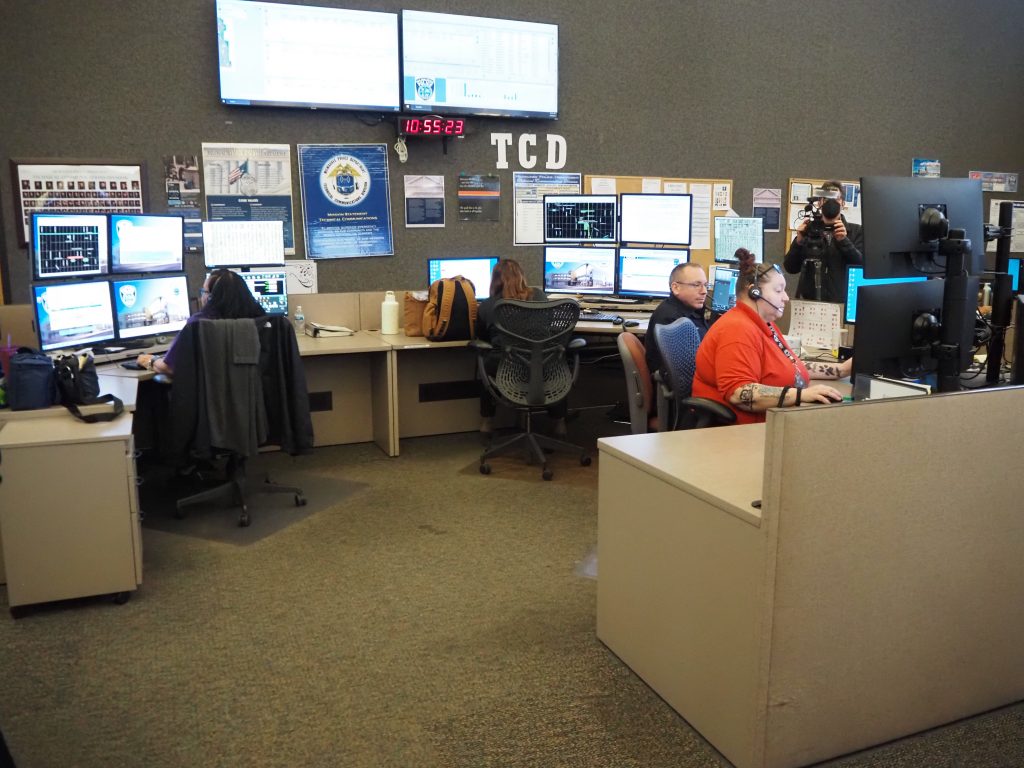City Faces Problems With 911 Call Center?
Millions spent, repeated delays and hours of closed door meetings suggest a problem launching system.
Somebody call 911, the City of Milwaukee has an issue with… its 911 call center.
City officials have talked for years about the planned overhaul of the city’s emergency call center. A new Department of Emergency Communication is expected to unify separate police and fire dispatch systems, improve response times and save money.
The city’s self-identified “linchpin” to the effort is the implementation of a new computer-aided dispatch (CAD) system that would unify police and fire operations and better assign available personnel to emergencies.
But the activation of that multi-million dollar CAD system, from global software company Hexagon, has been repeatedly delayed. And now the Common Council has spent more than four hours in closed session discussing issues with the rollout of the unified call center.
The city’s current setup, which handles more than one million calls annually, involves every 911 call first going to the Milwaukee Police Department. If it’s a fire or health issue, the call is transferred to a Milwaukee Fire Department call center which has a separate software system.
The two operations, which resemble Wall Street trading floors with lots of monitors and intensely-focused workers talking on headsets, are separated by a wall on the upper floor of a west-side police station.
But the unification has been quietly delayed multiple times since city officials first began talking about the concept in 2020.
In March 2022, the two departments joined with the Mayor’s Office to show off the facility in an attempt to attract workers to fill a growing number of vacancies. Officials discussed not only how pay was being boosted 26%, but how training would be unified, boundaries eliminated and a new CAD system launched within the year.
That same month the city hired Suzanne DeFillips to be an interim, contract-based director of the newly-created Department of Emergency Communication.
“Since that time we set up the infrastructure for the new department, hiring administrative personnel, but also work policies for the department that’s rather large, almost 200 personnel and developing those types of administrative policies,” said DeFillips on Thursday to the Public Safety & Health Committee. Since January, a workgroup consisting of every impacted department meets weekly. “We set up a master plan in order to execute certain benchmarks.”
In her brief public remarks, DeFillips said she hoped the unified call center would begin operation in the fourth quarter of 2023.
DeFillips is currently hiring a new management team — six managers and 12 supervisors. Many are expected to be promotions she said. The new team is necessary because the police section is currently overseen by sworn personnel who wear a gun to work to direct people answering the phone.
“That was one of the recommendations of the Matrix study,” said Ald. Scott Spiker of a citywide police staffing study. It’s also one that then-budget director Dennis Yaccarino said would help save money in 2020. But city officials have backed away from that hope in the past year because meeting a national benchmark of answering 90% calls within 15 seconds would require more staff taking calls than once thought. DeFillips put the number at 43 additional call takers, spread over three shifts and weekends.
Spiker said the transition away from sworn personnel, and its impact on the city’s labor contract with Milwaukee Police Supervisors’ Organization, was one of several items he wanted to discuss in closed session.
The committee then spent 90 minutes in closed session. It was a precursor to an even longer session held Wednesday morning.
The Fire & Police Commission (FPC) produces a quarterly progress report on meeting the 15-second target. The most recent report, submitted in November and covering the second quarter of 2022, says MPD answered 73% of calls in line with the benchmark and MFD answered 77%.
The quarterly report also shows the delays in implementing the “linchpin” CAD system, known as OnCall. It was once expected to go live in March 2022.
That was moved back to late 2022. Both the March and June 2022 call-time reports noted that “the projected time for the OnCall cutover is Q4 2022. We hope to have a firm committed cutover date shortly.”
But that date was moved back further in the November 2022 report: “Currently the projected time for the OnCall cutover is April 2023. It was hoped that the cutover would take place in Q4 2022, but further infrastructure testing must be completed before OnCall training of call takers can begin.”
The CAD system needs to be ready before training can begin, says the report.
So will the latest deadline of April 2023 be met? DeFillips didn’t mention the April date last week.
A spokesperson for Mayor Cavalier Johnson, after the article was first published, said the mayor had been briefed on the matter and fully expects the unified call center to go into operation this fall.
The cost is adding up. The 2020 budget allocated $5 million in borrowing for purchasing the Hexagon system, which was selected from six bids. Two contracts for consultants, both of which were increased in 2022 with council approval, add an additional $896,809 to the cost. The city’s IT department, according to budget documents, also has three newly-created roles working on the transition.
The larger of the consulting contracts, $755,454 with Winbourne Consulting, includes DeFillips’ role. She previously served as the emergency communications program manager with the Seminole County Government in central Florida.
While city officials have declined to answer questions about what’s being discussed in closed session, their actions make clear the issues are big.
Going into Wednesday’s closed-door session, finance committee chair Alderwoman Marina Dimitrijevic said she wanted the discussion to wrap up by 9:30 a.m, limiting it to less than 30 minutes. It lasted an additional two hours.
The council alone has now spent four hours in closed session discussing the issue. The FPC board has also discussed the issue in closed session.
A hearing notice list for the closed session meeting is a who’s who of city leadership. It includes council members, DeFlillips and her Winbourne coworker Tom Mareau, Kathryn Block from the City Attorney’s Office, leadership from MPD, MFD and FPC, purchasing director Rhonda Kelsey, IT director David Henke, budget director Nik Kovac, the mayor’s council liaison Arlisia McHenry and chief of staff Nick DeSiato. The closed session notice references possible litigation.
Political Contributions Tracker
Displaying political contributions between people mentioned in this story. Learn more.
- July 18, 2024 - Cavalier Johnson received $20 from Rhonda Kelsey
- July 22, 2020 - Cavalier Johnson received $50 from Arlisia McHenry
- May 7, 2015 - Nik Kovac received $10 from Cavalier Johnson
City Hall
-
Council Blocked In Fight To Oversee Top City Officials
 Dec 16th, 2025 by Jeramey Jannene
Dec 16th, 2025 by Jeramey Jannene
-
Latest Effort to Adopt New Milwaukee Flag Going Nowhere
 Dec 3rd, 2025 by Jeramey Jannene
Dec 3rd, 2025 by Jeramey Jannene
-
After Deadly May Fire, Milwaukee Adds New Safety Requirements
 Dec 2nd, 2025 by Jeramey Jannene
Dec 2nd, 2025 by Jeramey Jannene























One wonders why they didn’t choose to merge with the County’s Office of Emergency Management which covers all the municipalities is the County with their own (working) CAD system.